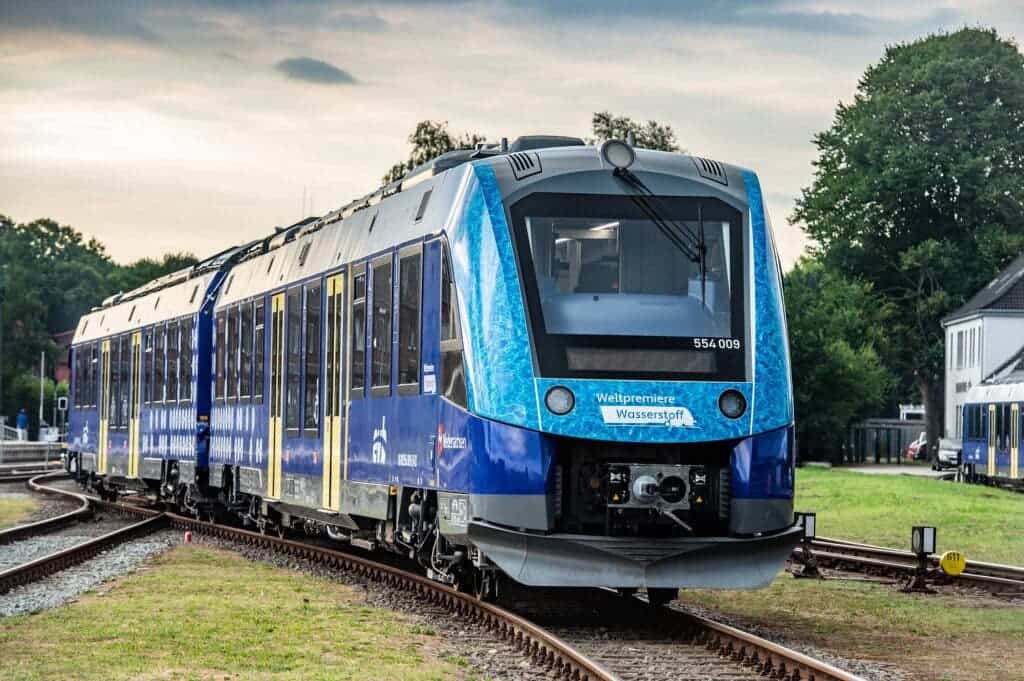The rail industry is facing big challenges. Its infrastructure is decades or centuries old and it’s expensive to upgrade. Diesel-powered trains dominate, but fuel is getting expensive, and the trains are noisy and terrible for the environment. However, there could be a way forward – swapping hydrogen-powered trains for their diesel equivalent.

A local train line in Germany near Hamburg started operating this week with hydrogen-powered trains, using a fleet of 14 produced by the French company Alstom. The trains can run all day long on just one tank of hydrogen and have a range of 1,000 kilometers. Alstom estimates that they will save more than 4,000 tons of CO2 emissions per year — equivalent to the annual emissions of 2,000 people.
The hydrogen trains will gradually replace the 15 diesel trains that currently run on the route, ending the year with only hydrogen trains. They can go at a maximum of 140 kilometers per hour, though the regular speed on the line is between 80 and 120. A hydrogen filling station has already been installed on the route to charge the trains.
“Emission-free mobility is one of the most important goals for ensuring a sustainable future,” Henri Poupart-Lafarge, CEO and Chairman of the Board of Alstom, said in a press statement. “The world’s first hydrogen train, the Coradia iLint, demonstrates our clear commitment to green mobility combined with state-of-the-art technology.”
The new hydrogen trains
The $92 million project involved designing the Coradia iLint trains in the southern French town of Tarbes and then assembling them in Salzgitter in central Germany. Alstom said this could be a zero-emissions solution to the rail lines that still use diesel in Germany, estimating up to 3,000 diesel trains could be replaced by hydrogen ones.
The Alstom trains have also been tested in other parts of Europe, highlighting the potential of hydrogen-based public transport. Two short-distance hydrogen trains were showcased in Glasgow, the United Kingdom last year for the COP26 climate summit. Russia and China have also started to experiment with hydrogen to power their trams or streetcars.
While major rail lines in Europe are being converted to electricity, the high costs of electrification can’t always be justified for less-used local lines. Electrifying train tracks requires overhead cables or a third line, uncommon on rural routes. This is where hydrogen trains come in, with Alstom and also Siemens hoping to expand their use.
The Coradia iLint trains from Alstom fuel up with hydrogen, collect oxygen from the ambient air, and a fuel cell covert these two inputs into electric current. The only waste products generated are water vapor and heat. It’s more like an internal combustion engine than a battery-powered vehicle, constantly using air and hydrogen for power.
There are still some drawbacks to hydrogen. Obtaining it is expensive and requires power and for now, the cheapest way to do this is with fossil fuels, which makes hydrogen an inefficient replacement. However, costs are gradually going down and the expected increases in fossil fuel costs could also make green hydrogen more attractive. As trains, other sectors are also looking at hydrogen, as heavy industry and shipping.









